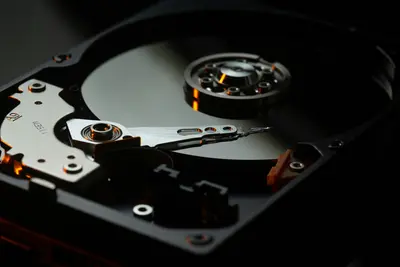⚙️ AlmaLinux System Requirements: Hardware Specs Guide
Planning your AlmaLinux installation? 🚀 Knowing the right hardware requirements is crucial for a smooth experience! Whether you’re setting up a server, desktop workstation, or virtual machine, this complete guide covers everything you need. From minimum specs to enterprise-grade configurations, let’s find the perfect setup for your needs! ⚡
🤔 Why System Requirements Matter?
Getting hardware specs right saves time and money! 🌟 Here’s why proper planning is essential:
- 💰 Budget Optimization: Buy exactly what you need
- ⚡ Performance Guarantee: Avoid slow, frustrating systems
- 🔮 Future Proofing: Plan for growth and upgrades
- 🛡️ Stability Assurance: Prevent crashes and hardware issues
- 💼 Professional Planning: Meet enterprise requirements
- 🔧 Troubleshooting: Identify hardware bottlenecks quickly
- 📊 Resource Management: Optimize memory and storage usage
- 🌍 Compatibility: Ensure all components work together
Over 10 million AlmaLinux installations worldwide! 🏆
🎯 What You Need
Let’s prepare for hardware planning success! ✅
- ✅ Basic understanding of computer components
- ✅ Knowledge of your intended use case
- ✅ Budget considerations for hardware
- ✅ Understanding of server vs desktop needs
- ✅ 20 minutes to review all options
- ✅ Hardware compatibility research tools
- ✅ Consideration for future expansion
- ✅ Excitement to build the perfect system! 🎉
Let’s discover your ideal AlmaLinux setup! 🌍
📝 Step 1: Minimum System Requirements
Essential specs for basic AlmaLinux operation! 🎯
Absolute Minimum Requirements:
# Bare minimum for AlmaLinux 9.x:
CPU: x86_64 architecture (64-bit only)
- 1 GHz processor minimum
- Single core acceptable
- Intel or AMD compatible
- VT-x/AMD-V for virtualization (optional)
RAM: 1.5 GB minimum
- 2 GB strongly recommended
- ECC memory supported
- Maximum: 48 TB (theoretical)
Storage: 10 GB available space
- 20 GB recommended minimum
- SSD preferred for performance
- SATA/NVMe/SAS supported
Network: Ethernet adapter
- 100 Mbps minimum
- Gigabit preferred
- WiFi adapters supportedLegacy Hardware Support:
# AlmaLinux 8.x supports older systems:
CPU: x86_64 with SSE4.2 instruction set
- Intel: Core 2 Duo and newer
- AMD: Phenom II and newer
- Minimum 800 MHz clock speed
# What's NOT supported:
❌ 32-bit (i686) architecture
❌ ARM processors (ARM64 has separate builds)
❌ PowerPC architecture
❌ Very old Intel Pentium/Celeron
❌ AMD K6/Athlon XP processorsBoot Requirements:
# UEFI and Legacy BIOS support:
Boot Methods:
- UEFI Secure Boot ✅
- Legacy BIOS ✅
- PXE Network Boot ✅
- USB Boot ✅
- CD/DVD Boot ✅
# Minimum boot partition sizes:
/boot partition: 1 GB minimum
EFI partition: 600 MB (UEFI systems)
swap partition: Equal to RAM (up to 8 GB)Perfect! 🎉 Basic requirements understood!
🔧 Step 2: Recommended Desktop Specifications
Optimal specs for desktop and workstation use! 📦
Home Desktop Configuration:
# Comfortable desktop experience:
CPU: 4 cores, 2.4 GHz or higher
- Intel: Core i5-8th gen or newer
- AMD: Ryzen 5 3600 or equivalent
- Integrated graphics acceptable
- Turbo boost supported
RAM: 8 GB DDR4 or newer
- 16 GB for heavy multitasking
- 3200 MHz speed recommended
- Dual channel configuration
- ECC not required for desktop
Storage: 256 GB SSD primary drive
- NVMe M.2 preferred
- 1 TB for multimedia workstations
- Separate /home partition recommended
- Traditional HDD for bulk storage
Graphics: Integrated or dedicated GPU
- Intel UHD 620 or better
- AMD Radeon RX 5500 or better
- NVIDIA GTX 1650 or better
- Multiple monitor supportDeveloper Workstation:
# Enhanced specs for programming:
CPU: 8 cores, 3.0 GHz or higher
- Intel: Core i7-10th gen or newer
- AMD: Ryzen 7 4700U or equivalent
- Virtualization support essential
- Multiple threads for compilation
RAM: 16 GB minimum
- 32 GB for large projects
- Fast DDR4-3600 or DDR5
- Low latency timings preferred
- ECC for critical development
Storage: 512 GB NVMe SSD
- PCIe 4.0 for best performance
- 2 TB for extensive repositories
- Fast random read/write speeds
- Consider dual SSD setup
Network: Gigabit Ethernet required
- WiFi 6 for wireless development
- Multiple network interfaces
- VPN hardware accelerationMedia Production Setup:
# Specifications for content creation:
CPU: 12+ cores, 3.5 GHz base clock
- Intel: Core i9 or Xeon W-series
- AMD: Ryzen 9 or Threadripper
- High boost clocks essential
- AVX-512 instruction support
RAM: 32 GB minimum
- 64 GB for 4K video editing
- 128 GB for complex 3D rendering
- Fast DDR4-4000 or DDR5
- ECC for professional reliability
Storage: 1 TB NVMe primary
- 4 TB secondary storage
- High endurance SSD required
- RAID configuration optional
- Network attached storage
Graphics: Professional GPU required
- NVIDIA RTX 4070 or better
- AMD RX 7800 XT or better
- 12 GB VRAM minimum
- Multiple display outputsAmazing! 🌟 Desktop specs optimized!
🌟 Step 3: Server Hardware Requirements
Enterprise-grade server specifications! ⚡
Small Business Server:
# Entry-level server configuration:
CPU: Intel Xeon E-2200 series
- 4-8 cores, 3.0 GHz base
- AMD EPYC 7002 series alternative
- Hardware virtualization support
- ECC memory controller
RAM: 16 GB ECC DDR4
- 32 GB for virtualization
- Registered DIMMs preferred
- Error correction essential
- Hot-swappable modules
Storage: Enterprise SSD array
- 500 GB NVMe boot drive
- 2-4 TB data storage
- RAID 1 for redundancy
- Hot-swap drive bays
Network: Dual gigabit NICs
- Redundant network paths
- IPMI for remote management
- Wake-on-LAN support
- VLAN capable switchesMid-Range Server:
# Production server specifications:
CPU: Dual Intel Xeon Silver 4300
- 16-24 cores total
- 2.4 GHz base, 3.8 GHz boost
- AMD EPYC 7003 series alternative
- Multiple socket support
RAM: 64 GB ECC DDR4-3200
- 128 GB for database servers
- Load reduced DIMMs
- Memory mirroring capable
- Hot-add memory support
Storage: Enterprise NVMe array
- 1 TB boot drives (RAID 1)
- 8 TB data storage (RAID 10)
- Battery-backed RAID controller
- SAS/SATA hybrid configuration
Network: 10 Gigabit Ethernet
- Dual 10GbE ports minimum
- SR-IOV virtualization support
- Hardware offload engines
- InfiniBand optionalEnterprise Server:
# High-performance server setup:
CPU: Dual Intel Xeon Platinum 8300
- 32-56 cores total
- 2.8 GHz base, 4.0 GHz turbo
- AMD EPYC 7004 series alternative
- Advanced security features
RAM: 256 GB DDR4-3200 ECC
- 512 GB-2 TB configurations
- 3DS LRDIMM technology
- Memory encryption support
- Advanced RAS features
Storage: All-NVMe configuration
- 2 TB boot drives (RAID 1)
- 20+ TB data storage
- NVMe over Fabrics ready
- Persistent memory support
Network: 25/100 Gigabit Ethernet
- Multiple high-speed ports
- RDMA over Converged Ethernet
- Smart NICs with offloading
- SDN/NFV capabilitiesExcellent! ⚡ Server specs covered!
✅ Step 4: Virtual Machine Requirements
Optimized VM configurations for AlmaLinux! 🔧
VirtualBox/VMware Desktop:
# Home virtualization setup:
Host Requirements:
- 8 GB RAM minimum (16 GB preferred)
- Quad-core CPU with VT-x/AMD-V
- 100 GB available storage
- Hardware acceleration enabled
AlmaLinux VM Configuration:
vCPUs: 2-4 virtual processors
- Enable VT-x/AMD-V passthrough
- Assign cores, not threads
- Balance with host needs
vRAM: 4 GB allocated memory
- 8 GB for GUI desktop use
- Dynamic allocation preferred
- Leave 4 GB for host OS
- Enable memory ballooning
vDisk: 40 GB virtual disk
- Thin provisioning enabled
- SSD storage on host preferred
- Separate data disks optional
- Snapshot-friendly sizing
Network: NAT or Bridged mode
- NAT for basic internet access
- Bridged for server simulation
- Multiple adapters supported
- Host-only for developmentProduction Virtualization:
# VMware vSphere/Hyper-V setup:
Host Server Specifications:
- 32+ GB RAM per host
- 16+ CPU cores with hyperthreading
- 10 Gigabit networking
- Shared storage (SAN/NAS)
AlmaLinux VM Templates:
Small VM: 2 vCPU, 4 GB RAM, 40 GB disk
Medium VM: 4 vCPU, 8 GB RAM, 100 GB disk
Large VM: 8 vCPU, 16 GB RAM, 200 GB disk
Database VM: 16 vCPU, 32 GB RAM, 500 GB disk
Resource Allocation:
- CPU reservation: 50% of allocation
- Memory reservation: 100% for critical VMs
- Disk I/O limits: Based on workload
- Network bandwidth: QoS policiesCloud Instance Sizing:
# AWS/Azure/GCP recommendations:
Development: t3.medium instance
- 2 vCPUs, 4 GB RAM
- $30-40/month estimated
- Burstable performance
- Good for testing
Production: m5.large or larger
- 2+ vCPUs, 8+ GB RAM
- $70-100/month estimated
- Consistent performance
- Enhanced networking
High Performance: c5.xlarge+
- 4+ vCPUs, 8+ GB RAM
- Compute optimized
- Low latency networking
- Premium instance storage
Database: r5.xlarge+
- 4+ vCPUs, 32+ GB RAM
- Memory optimized
- High memory bandwidth
- Provisioned IOPS storagePerfect! 🏆 Virtualization requirements set!
🎮 Quick Examples
Real-world hardware configuration examples! 🎯
Example 1: Budget Home Server Build
# Affordable AlmaLinux home server:
Hardware List:
CPU: AMD Ryzen 5 5600G (6 cores, 3.9 GHz)
- Integrated graphics included
- Low power consumption
- Excellent single-thread performance
- Cost: ~$160
Motherboard: ASRock B450M Pro4
- AM4 socket compatibility
- 4 DIMM slots for expansion
- Multiple SATA ports
- Cost: ~$70
RAM: 32 GB DDR4-3200 (2x16GB)
- Corsair Vengeance LPX
- Non-ECC but reliable
- Room for future upgrade
- Cost: ~$120
Storage: 1 TB NVMe SSD (Samsung 980)
- Fast boot and application performance
- 3,500 MB/s read speeds
- 5-year warranty
- Cost: ~$80
Power Supply: 450W 80+ Bronze
- Seasonic Focus GX-450
- Modular cables
- Silent operation
- Cost: ~$70
Total Cost: ~$500
Perfect for: File server, web hosting, developmentExample 2: Professional Workstation
# High-performance development machine:
Premium Configuration:
CPU: Intel Core i7-13700K
- 16 cores (8P + 8E), 24 threads
- 5.4 GHz max boost clock
- Intel UHD 770 graphics
- Cost: ~$400
Motherboard: ASUS ROG Strix Z790-E
- Latest chipset features
- WiFi 6E and 2.5G Ethernet
- Multiple M.2 slots
- Cost: ~$350
RAM: 64 GB DDR5-5600 (2x32GB)
- G.Skill Trident Z5
- Low latency timings
- RGB lighting optional
- Cost: ~$300
Storage: 2 TB NVMe Gen4 SSD
- Samsung 980 Pro
- 7,000 MB/s sequential reads
- Professional reliability
- Cost: ~$200
Graphics: NVIDIA RTX 4070
- 12 GB GDDR6X VRAM
- AI/ML acceleration
- Multiple 4K displays
- Cost: ~$600
Total Cost: ~$1,850
Perfect for: Software development, content creation, virtualizationExample 3: Enterprise Database Server
# Mission-critical database configuration:
Enterprise Hardware:
CPU: Dual Intel Xeon Gold 6338
- 64 cores total (32 per socket)
- 2.0 GHz base, 3.2 GHz turbo
- Advanced security features
- Cost: ~$2,400
Motherboard: Supermicro X12DPi-NT6
- Dual socket LGA4189
- 16 DIMM slots per CPU
- 10GbE and IPMI included
- Cost: ~$800
RAM: 512 GB DDR4-3200 ECC
- 16x32GB RDIMMs
- Samsung or Micron modules
- Error correction essential
- Cost: ~$2,500
Storage: Enterprise SSD array
- 8x 1.92 TB NVMe SSDs
- Intel P4610 series
- U.2 form factor
- Cost: ~$4,000
RAID Controller: Broadcom 9560-16i
- Hardware RAID 10
- 4 GB cache memory
- Battery backup unit
- Cost: ~$800
Network: Dual 25GbE adapters
- Intel XXV710-DA2
- SR-IOV support
- RDMA capabilities
- Cost: ~$400
Total Cost: ~$10,900
Perfect for: Large databases, ERP systems, high-availability applicationsExample 4: Cloud Migration Planning
# On-premises to cloud comparison:
Current Server: Dell PowerEdge R740
- Dual Xeon Gold 6248
- 384 GB RAM
- 20 TB storage
- 3-year hardware cycle
Cloud Equivalent: AWS c5.24xlarge
- 96 vCPUs, 192 GB RAM
- $4.08/hour on-demand
- $35,000/year estimated
- No hardware maintenance
Hybrid Approach: Critical apps on-premises
- Development in cloud
- Disaster recovery in cloud
- Cost optimization strategy
Migration Strategy:
1. Assess current workloads
2. Right-size cloud instances
3. Plan data transfer costs
4. Implement backup strategy
5. Monitor and optimize costs🚨 Fix Common Problems
Hardware planning troubleshooting! 🔧
Problem 1: Insufficient Memory for Workload
Solution:
# Diagnose memory requirements:
# Check current usage:
free -h
htop
cat /proc/meminfo
# Monitor for 24 hours:
sar -r 1
# Calculate requirements:
# Base OS: 2-4 GB
# Applications: Varies widely
# Buffer/Cache: 20-30% of total
# Safety margin: 25% extra
# Memory sizing formula:
Required = (Base + Apps + Buffers) × 1.25
# Example calculation:
Base OS: 4 GB
Applications: 12 GB
Buffers: 4 GB (25% of 16 GB)
Safety: 5 GB (25% of 20 GB)
Total Required: 25 GB → Round up to 32 GB
# Upgrade recommendations:
# Desktop: 8 GB → 16 GB → 32 GB
# Server: 16 GB → 32 GB → 64 GB → 128 GB
# Database: Start with 64 GB minimumProblem 2: Storage Performance Bottlenecks
Solution:
# Identify storage issues:
# Check I/O wait times:
iostat -x 1
iotop
# Test disk performance:
# Sequential read test:
dd if=/dev/zero of=testfile bs=1G count=1 oflag=dsync
# Random I/O test:
fio --name=random-write --ioengine=posixaio --rw=randwrite --bs=4k --size=4g --numjobs=1 --iodepth=1 --runtime=60 --time_based
# Performance requirements by use case:
Web Server: 1,000+ IOPS minimum
Database: 5,000+ IOPS for good performance
Virtualization: 10,000+ IOPS recommended
High-frequency trading: 100,000+ IOPS
# Storage upgrade path:
Traditional HDD: 100-200 IOPS
SATA SSD: 50,000-90,000 IOPS
NVMe SSD: 200,000-1,000,000 IOPS
Enterprise NVMe: 1,000,000+ IOPS
# Quick fixes:
# Add more memory for file caching
# Use faster storage tier for critical data
# Implement storage tiering strategy
# Consider RAID 10 for balanced performanceProblem 3: CPU Performance Issues
Solution:
# Identify CPU bottlenecks:
# Check CPU utilization:
top
htop
mpstat 1
# Monitor per-core usage:
sar -P ALL 1
# Check for thermal throttling:
sensors
cat /proc/cpuinfo | grep MHz
# Performance tuning:
# Set CPU governor to performance:
cpupower frequency-set -g performance
# Check for hyperthreading:
lscpu | grep Thread
# Optimize for workload:
# CPU-bound: More cores, higher frequency
# I/O-bound: Balanced approach
# Memory-bound: Focus on memory subsystem
# Sizing guidelines:
Development: 4-8 cores sufficient
Web server: 8-16 cores recommended
Database: 16-32 cores for large systems
Virtualization: 32+ cores for host servers
HPC workloads: Maximum cores availableProblem 4: Network Performance Limitations
Solution:
# Test network performance:
# Bandwidth test:
iperf3 -c target_server
# Latency test:
ping -c 100 target_server
# Monitor network utilization:
iftop
nethogs
ss -tuln
# Network requirements by use case:
File sharing: 1 Gbps sufficient
Database replication: 10 Gbps recommended
Virtualization: 10-25 Gbps for production
High-frequency trading: 40-100 Gbps
# Optimization strategies:
# Use multiple network interfaces
# Enable jumbo frames (9000 MTU)
# Implement network bonding/teaming
# Consider SR-IOV for virtualization
# Quick configuration:
# Enable jumbo frames:
ip link set dev eth0 mtu 9000
# Check current settings:
ethtool eth0📋 Hardware Requirements Summary
| Use Case | CPU | RAM | Storage | Network |
|---|---|---|---|---|
| Minimal Desktop | 2 cores, 2.0 GHz | 4 GB | 40 GB SSD | 100 Mbps |
| Standard Desktop | 4 cores, 2.4 GHz | 8 GB | 256 GB SSD | 1 Gbps |
| Developer Workstation | 8 cores, 3.0 GHz | 16 GB | 512 GB NVMe | 1 Gbps |
| Content Creation | 12 cores, 3.5 GHz | 32 GB | 1 TB NVMe | 1 Gbps |
| Small Server | 4 cores, 3.0 GHz | 16 GB ECC | 500 GB SSD | 1 Gbps |
| Production Server | 16 cores, 2.4 GHz | 64 GB ECC | 2 TB NVMe | 10 Gbps |
| Enterprise Server | 32+ cores, 2.8 GHz | 256 GB ECC | 10 TB NVMe | 25 Gbps |
| Database Server | 24+ cores, 3.0 GHz | 128 GB ECC | 4 TB NVMe | 10 Gbps |
💡 Tips for Success
Master hardware planning like a pro! 🌟
- 🔍 Research First: Check hardware compatibility lists
- 📊 Monitor Current: Understand your existing usage patterns
- 🚀 Plan Growth: Size for 3-5 years of expansion
- 💰 Balance Budget: Invest where it matters most
- 🔧 Test Thoroughly: Validate performance after installation
- 📚 Document Specs: Keep detailed hardware inventories
- 🛡️ Consider Redundancy: Plan for component failures
- 🌡️ Monitor Health: Track temperatures and wear levels
- ⚡ Optimize Power: Consider efficiency and cooling needs
- 🤝 Professional Help: Consult experts for critical systems
🏆 What You Learned
Congratulations! You’re now a hardware planning expert! 🎉
- ✅ Mastered minimum system requirements for AlmaLinux
- ✅ Optimized desktop and workstation specifications
- ✅ Designed enterprise server configurations
- ✅ Planned virtual machine resource allocation
- ✅ Created real-world hardware examples
- ✅ Solved common performance bottlenecks
- ✅ Learned cost-effective upgrade strategies
- ✅ Gained essential infrastructure planning skills
🎯 Why This Matters
Your hardware planning expertise ensures project success! 🚀
- 💰 Cost Savings: Avoid over-provisioning and waste
- ⚡ Performance Optimization: Eliminate hardware bottlenecks
- 🛡️ Reliability: Build stable, dependable systems
- 📈 Scalability: Plan for future growth needs
- 💼 Professional Value: Essential infrastructure skill
- 🔧 Problem Prevention: Avoid costly hardware issues
- 🌟 Optimal Experience: Ensure smooth AlmaLinux operation
- 🎯 Strategic Planning: Make informed technology decisions
You now have the knowledge to build perfect AlmaLinux systems! 🏆
Plan smart, build better! 🙌




